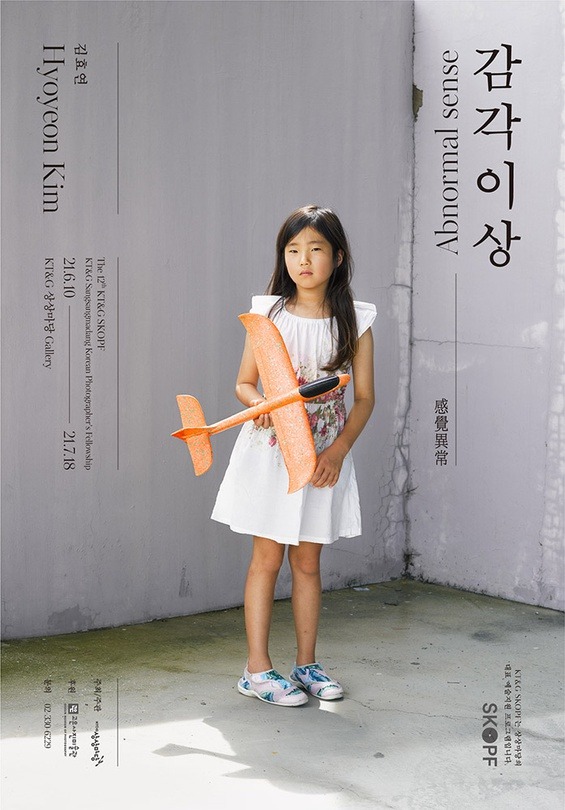
| Period| | 2021.06.10 - 2021.08.15 |
|---|---|
| Operating hours| | 12:00 - 18:00 |
| Space| | KT&G Sangsang Madang Hongdae/Seoul |
| Address| | 65, Eoulmadang-ro, Mapo-gu, Seoul, Republic of Korea |
| Closed| | Holiday closure |
| Price| | Free |
| Phone| | 02-330-6229 |
| Web site| | 홈페이지 바로가기 |
| Artist| |
김효연
|
정보수정요청



|
|
Exhibition Information
My awkward grandmother, From the closest to the farthest place Hyoyeon Kim My maternal grandmother was the youngest daughter of a family of Oriental medicine practitioners for Koreans on the outskirts of Hiroshima. At the age of eighteen she met my maternal grandfather who had been taken to Japan as a forced laborer. With the Pacific War nearing its end, the region surrounding Japan was extremely unstable. In 1944, my maternal grandfather crossed the sea and fled to Busan with my maternal grandmother, then pregnant with their first child. She had left her family behind in Japan and had just started a new life in Busan. In the following year, pregnant with their second child, she heard the news that ‘a big bomb had been dropped in Hiroshima.’ People said half of the city had disappeared because of a single bomb. All contact with her family in Japan had been cut off. 28 years later, in 1978, my grandmother’s second older brother, her family’s sole surviving member following the Hiroshima atomic bomb, came to find her in Busan. People later called him ‘Hibakusha’ (victim of the atomic bomb). He never had any children. I remember that my grandmother’s Korean was still somewhat awkward. In the fall of 2017, the daily news was bombarded with sensational reporting on nuclear arms and radiation following North Korea’s successful sixth nuclear test. This event was unlike any other war in history that I had been taught. Throughout my life, neither school nor society had exposed me to information about the impacts of the atomic bomb. My understanding was limited to baseless fear of nuclear weapons. On TV, never-ending arrays of missiles were soaring through the sky. With the atomic bomb, we only see its cruel results, not its process. Rather than questioning the war itself, my personal experiences led me to be interested in the people that had experienced and survived war, and the post-war state. These people have been molded, not by their own volition, but by the macro-level forces of war, colonialism, forced conscription and migration. What I realized through my work was that this single-day event that took place more than 75 years ago across the sea, inconveniently yet effectively exerts its influence on our society to this day, as well as on the future generations in unforeseeable ways. <Abnormal Sense> project started out from the history of one family. It is also our collective history that has been largely left unnoticed. South Korea has the second largest number of nuclear bomb victims in the world. The ‘Hapcheon Welfare Center for Atomic Bomb Victims,’ still houses about one hundred first generation nuclear bomb victims nearing their 90s. Next to it you will find an archive with a restricted storage area, which stores the original documents with personal information of all 5,001 nuclear bomb victims. In the early spring of 2018, I was overrun with a sense of helplessness looking at these stored and neglected documents, while also realizing that they could ignite new conflicts. In 1945 when the atomic bomb was dropped on Hiroshima, there were about 100,000 Koreans residing in the area. As of today, tentative calculations estimate that over 49,000 Koreans died from nuclear radiation exposure. Most of the victims were from the same or neighboring villages and were forced into labor or sought ways to make some money in Hiroshima. At the time, conscription was done per region, so 80% of Koreans who came to Hiroshima were from the Gyungnam province, specifically from ‘Hapcheon.’ When the war ended, save for around 1,000 Koreans, the rest of the surviving population of around 11,000 Koreans sought their way home. The atomic bomb victims also made their way home. While working on this project, I was careful to avoid any prejudice against the victims of the atomic bomb. I met with victims in person and was astonished to find out just how much even the second-generation victims had a large number of disabilities and sudden illnesses. The woman with Down’s syndrome featured in the “Abnormal Sense” was the first second-generation atomic bomb victim who allowed her picture to be taken. Working with her, my perspective shifted from the ‘individual and verification’ to ‘family and change.’ I also came to recognize that these people needed to be taken care of in the future. Hapcheon’s second name is ‘second Hiroshima’, and every year children are born, underlain with anxiety and blessing. ‘My maternal grandmother never traveled to Hiroshima again in her lifetime. Our family did not ask any questions. However, there is my grandmother, in my mother’s and my memory, occasionally looking out the kitchen window, humming Japanese tunes.’ * “Abnormal sense” is a medical lexicon, which refers to all types of abnormal sensation in the sensory areas or lack of sensory experiences. When a stimulus from our environment is detected by a sensory receptor, including the external and the internal senses, the nerve fibers relay that sensory information to the sensory area in the cerebral cortex through the nerve fibers: and sensation has occurred. ‘Abnormal sense’ thus refers to the situation of the marginalized people looking back at the tragic history as well as the changes that I went through after meeting them. (Source = KT&G Sangsang Madang)
